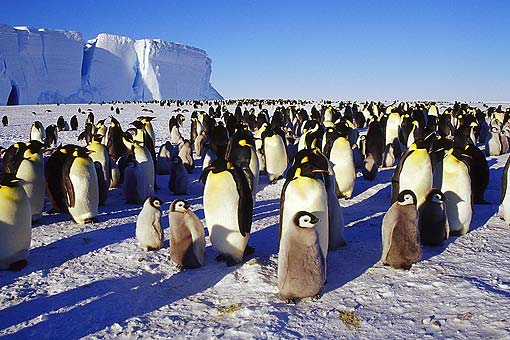Chick-kidnapping Behavior in Emperor Penguins
Emily Kam and Garon Coriz Biology 342 Fall 06
Introduction
This website focuses on the chick-kidnapping behavior displayed by
the female emperor penguins when they return for her chick after feeding and
realize that the chick is dead or missing. The instinct to raise young
drive these unfortunate females to steal the chicks from other
mating couples, but once the initial urge gives way to the realizatoin
that the chick is not their own, they abandon the chick, leaving the
youngster open to the elements and predation.
Standing nearly 4 feet tall and weighing around 75 pounds, the Emperor
Penguin (Aptenodytes forsteri) is the largest penguin species in the world.
The populations usually stay in close proximity to the shores of Antarctica,
but have been known to travel north several hundred miles near the southern
coasts of South America and Australia. In these waters, emperor
penguins can find all their prey, which consists mainly of fish and
cephalopods, and occasionally krill.
The emperor penguins are easily recognized by their big black heads, thick
blue-grey neck, black beak, and orange ear patches. The penguins have really
dense and thick feathers that are also greasy, so as to retain heat and keep
the water off their feathers. In addition to the thick feathers, the emperor
penguins have a layer of blubber under the skin.
Breeding Pattern
In the early part of winter, the emperor penguins march toward remote areas
of the Antarctica to breed once the sea ice has formed. The emperor penguins
have a very complicated breeding pattern.
Once at the breeding ground, the male and female penguins either look for
their mate from the previous year or look for a new mate. Once a mate is
found, courtship begins. Not long after, the female will lay her one and
only egg. She will keep it between her feet under her thick feathers to keep
the egg warm before passing it on to the male and then going off to the sea
to feed. The male penguins are now responsible for taking care of the egg
till the mother returns.

Figure 1. An emperor penguin colony in the early summer. (http://www.arcturusexpeditions.co.uk/cruises/ross_sea.html)